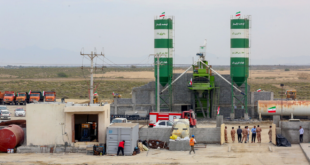The Islamic State has utilised the recent collapse of the Assad regime in Syria and the rise of Hayat Tahrir al-Sham (HTS) to intensify its ideological campaign. Through its latest issue of al-Naba (issue 473), released in recent days, the group has disseminated a narrative portraying these events as betrayals of Islamic principles and evidence of external manipulation.
By leveraging these themes, the Islamic State aims to undermine its rivals, bolster its legitimacy, and exploit instability to reassert its influence.
Key Narratives Promoted in al-Naba’s article
Betrayal Allegations Against HTS. The Islamic State accuses Hayat Tahrir al-Sham of abandoning jihadist principles to pursue political legitimacy. In al-Naba, the group claims that HTS alliances with external powers and its political manoeuvring represent a fundamental deviation from Islamic ideals. These accusations discredit HTS and sow doubt among its supporters.
Foreign Conspiracy Claims. The narrative advanced in al-Naba portrays the current situation in Syria as part of a broader foreign conspiracy against Sunni Muslims. By characterising itself as a partner of Western governments and regional stakeholders, the Islamic State strategically establishes its identity as the ultimate defender of the ummah (Islamic community) from foreign influence and control.
Rejection of Secular Governance. The Islamic State uses the interim government’s announcement of elections to criticise secular governance as incompatible with Shari’a (Islamic law). The document described the suggested democratic transition as a deceptive cover for the ongoing subjugation of the Muslim population, underscoring its opposition to all political systems not aligned with its understanding of Islamic rule.
Impacts of the Islamic State’s Narrative
On Hayat Tahrir al-Sham
Erosion of Authority: The Islamic State’s claims of ideological betrayal may erode the credibility of HTS, causing disillusionment among its members and supporters.
Internal Division: Persistent propaganda could lead to defections or fragmentation within HTS, weakening its organisational cohesion.
On Regional Stability
Recruitment Surge: The Islamic State’s narrative could resonate with disaffected individuals in Syria, bolstering its recruitment efforts.
Sectarian Tensions: The emphasis on Sunni victimhood risks exacerbating sectarian divisions, destabilising the region further.
Operational Resurgence: By exploiting governance and security gaps, the Islamic State may rebuild its operational capacity in Syria.
Targets of the Islamic State’s Propaganda
HTS Members and Supporters. The group intends to capitalise on ideological fissures within HTS, specifically targeting those expressing disillusionment with the leadership’s recent actions.
Syrian Sunni Communities. The Islamic State seeks to attract local populations disillusioned with the provisional government or HTS, presenting itself as an alternative protector of Islamic principles.
Global Jihadist Audience. Through al-Naba and other propaganda outlets, the Islamic State addresses an international audience, seeking to galvanise support by framing the events in Syria as part of a larger battle for Islam.
Conclusion
Enhanced intelligence operations are essential to curbing the influence of the Islamic State’s propaganda. The disruption of distribution networks for al-Naba and similar publications, crucial for disseminating the group’s propaganda, should be a primary aim. In parallel, counter-narrative initiatives ought to expose the failures and contradictions within the Islamic State’s assertions.
If the interim government, Hayat Tahrir al-Sham, and other factions fail to successfully manage the transition from the Assad regime to a new governance structure, local stability in Syria could significantly decline. Ongoing Israeli and Turkish operations might exacerbate this failure aimed at securing strategic buffer zones and territories, as well as by Western actions that could alienate the population from the emerging Syrian government.
In such a scenario, dissatisfaction among the Syrian people may create an environment conducive to the Islamic State’s jihadist propaganda. This discontent could provide fertile ground for the group to recruit new fighters, further destabilising Syria and posing a threat to regional security.
 Eurasia Press & News
Eurasia Press & News



